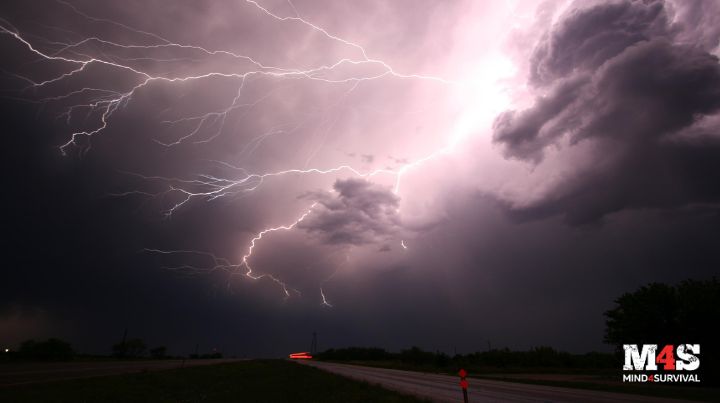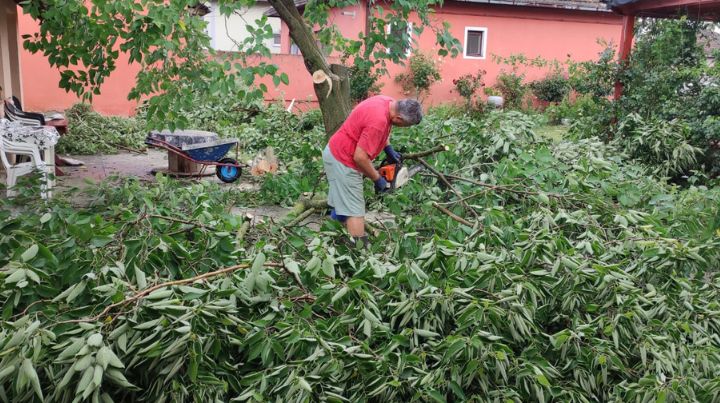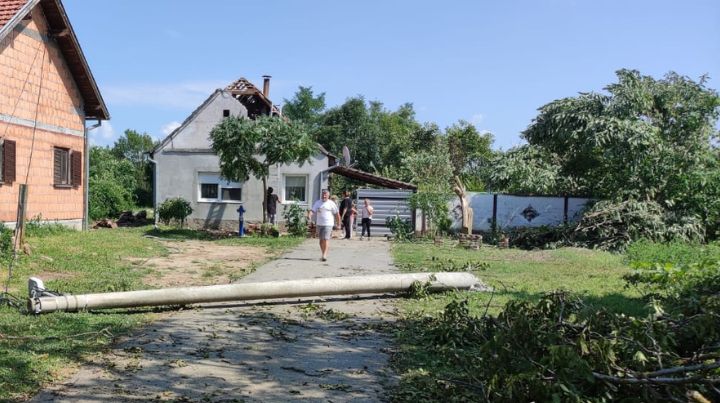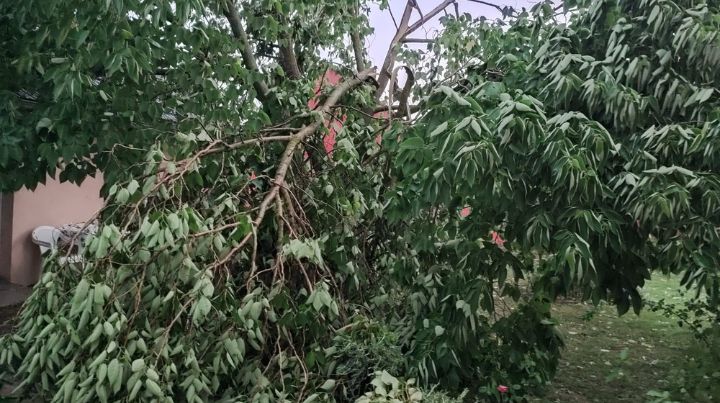How to Prepare For a Major Storm (And What To Do If You Haven’t)

A massive storm just ravaged my county and destroyed almost everything in its wake. With winds reaching speeds of 120 MPH, it ripped trees and concrete electrical poles out of the ground, swinging them around like Play-Doh. Entire roofs were found hundreds of yards from their houses.
My house wasn’t too damaged, but with four people dead, hundreds injured, and hundreds of thousands with severe material damage on their homes – this got me wondering; what could those people have done to avoid this, and what should you do if you haven’t prepared?
Stay Tuned In
In order to prepare for a storm, you first have to know that a storm is brewing. The best way to stay informed on these topics is by checking the weather report. It will take no more than a minute out of your day, and staying well-informed is half the battle.
Orange storm alerts had been making the rounds since Sunday. When the storm hit on Wednesday afternoon, some people said they didn’t even know it was coming. They had two days to prepare, yet they didn’t, as they were uninformed.
Stay tuned in and listen to the local authorities – they’ll report on the weather and let you know what’s going on early enough! The National Weather Service is the best option.

Photo of actual storm aftermath taken by the author.
Prepare Supplies (Water and Alternative Electricity Sources)
It’s now clear to everyone in my area that the biggest danger a hurricane poses, aside from flinging a 10-ton oak tree at you, is cutting off electricity and water supply.
Once you’re no longer in immediate danger, you won’t be able to charge your phone, turn on the TV or the lights in your home. The cell towers will likely be down for a while, too (this will be a priority for the emergency crews, so they’ll try to get them operational as quickly as possible).
It’s also possible that you won’t have access to clean water.
You should prepare yourself for that scenario in advance. Once the hurricane ripped out electrical lines, the people in my county were told that some neighborhoods wouldn’t have electricity for two weeks!
They all ran to the store to buy gas-powered generators, only to find that there were no more generators to sell, as people bought them in advance.
You should be a person who buys a generator in advance!
When it comes to water – just stockpile a dozen of those big water jugs in a safe, accessible area. You don’t know how long you’ll be out of water, and while this will most definitely be a priority for the fixing crews, it may take them days before they get running water to your home.
Other supplies you should prepare:
- flashlights and lanterns (don’t forget the batteries)
- a first aid kit
- personal documents
- a fire extinguisher

Photo of storm aftermath taken by the author. Note the missing roof!
Prepare Food
Regarding food, it’s possible you won’t be able to cook because the electricity is out. A portable gas stove would really come in handy in this scenario, but if you don’t have one, you’ll want to stockpile MREs and assorted canned foods.MREs are Meals Ready to Eat – simple military rations that come pre-made. All you have to do is mix them with water. They don’t taste particularly good, but they’ll keep you from starving.
A good alternative to military MREs are camping MREs, which usually have a bit more taste to them (speaking from personal experience) – you can find them in most outdoor and sporting goods stores!
Fruit is also a good food to keep, as it doesn’t go bad quickly, and you don’t need to refrigerate it.
Prepare Your Home for the Storm to Minimize Damage
The best way to protect your home from destruction is to take away the storm’s ammo. Powerful winds will rip off dying tree branches or entire trees – cut those branches off in advance, and if possible, anchor the tree to the ground.
The same rule applies to shingles – wind can easily blow them off your roof and break your neighbors’ windows. Avoid this by fixing the roof before the storm hits.
To avoid that happening to you – board up your windows (if possible).
Anything loose that the wind can easily send flying your way should be stored indoors. This means lawn chairs, tables, tools, children’s toys, garbage cans, and other stuff that isn’t tied down to the ground should be brought inside (a shed is a great place to store this kind of stuff).
Finally – park your car in the garage. It’s the garage’s job to keep the car safe – let it do its job.

Photo of actual storm aftermath taken by the author.
What to Do if You Haven’t Prepared?
So, the storm hit, and you didn’t prepare for it?
For now, all you can do is stay safe. Hide in the basement – the basement is generally the best place to hide in case of storms, tornadoes, and hurricanes.
Do not leave your house under any circumstances during a storm (you can break this rule if someone needs to be taken to the hospital, if there’s a fire, or if the authorities order an evacuation).
Outlast the storm and deal with the consequences once it’s done.
Unfortunately, if you haven’t prepared, you can expect a lot of material damage – loose furniture likely flew all over your neighborhood, and your car may have been damaged by said furniture or falling trees.
However, human life comes first, and you should never go out during a storm to bring that stuff inside.
Final Thoughts
Storms are one of the most realistic and common emergency scenarios you’ll face, and there are three key aspects of preparing for a storm. The first one is preparing for the aftermath (loss of electricity, water, and food supply). The second aspect is minimizing property damage, not just of your own home, but also in your neighborhood.
The most important aspect of preparing for a storm, however, is surviving it – the best way to do that is by hiding in a well-fortified place, such as the basement.
Keep all your supplies there, and stay tuned for updates from the authorities. Do not go outside until the authorities confirm it’s safe!
Additional Resources:
Don't Miss Out!
Join the thousands of people who rely on Mind4Survival preparedness advice by subscribing to our FREE newsletter.
- Practical preparedness information
- Zero Spam
- < 0.25% of people unsubscribe




Join Mind4Survival!
Stay informed by joining the Mind4Survival! 100% Secure! 0% Spam!
Follow Us!
Affiliate Disclosure
Mind4Survival is a free, reader-supported information resource. If you make a purchase through our link, we may, at no cost to you, receive an affiliate commission.

